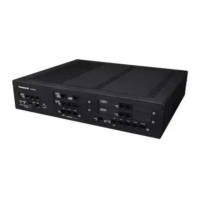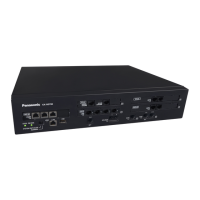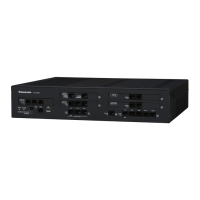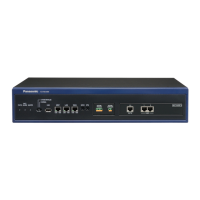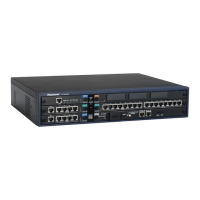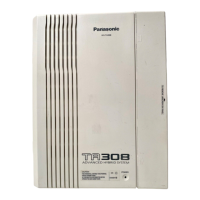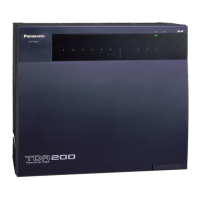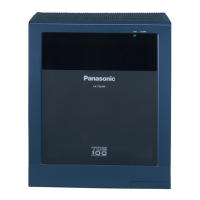2.18.3 External Sensor
Description
External sensing devices, such as security alarms or smoke detectors, can be connected to the PBX. When
the PBX receives input from a sensor, a call is made to the preset destination, alerting the extension user.
The available destinations of a sensor call are as follows:
[Available Destinations]
Destination Availability
Wired Extension (PT/SLT/ISDN Extension)
ü
PS
ü
SIP Extension
ü
Incoming Call Distribution Group
PS Ring Group
UM Group
VM Group (DTMF/DPT)
External Pager (TAFAS)
DISA
Analogue/ISDN Remote Maintenance
Idle Line Access no. + Phone no.
Trunk Group Access no. + Trunk Group no. + Phone no.
Other PBX Extension (TIE with no PBX Code)
Other PBX Extension (TIE with PBX Code)
When the call is answered, if distinctive dial tones are enabled, dial tone 3 is heard, and continues until the
user goes on-hook. If the sensor call is not answered within a specified time, the call will be cancelled. It is
possible
to set a different ring tone pattern for calls received from each external sensor, to distinguish between
them.
Also an e-mail can be sent to a specified e-mail address when the external sensor detects alarm.
For more detail information, refer to 5.4.3 E-mail Notification of Sensor Alarm.
Conditions
• Hardware Requirement:
An external sensor and a DPH2 card
• Some devices may be unable to communicate correctly with the PBX. Confirm compatibility with the
manufacturer of a device before installing it.
• After a sensor has been activated, the PBX will ignore any further alerts from the same sensor for the
duration specified by a timer. This timer can be set separately for each sensor.
• As long as the previous sensor call is still being performed, any further alerts from the same sensor are
ignored.
• The assigned sensor name and/or number are shown on the display of PTs and PSs when a sensor call
is received.
Feature Guide 233
2.18.3 External Sensor
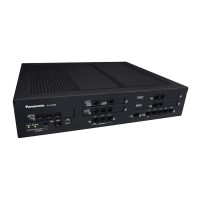
